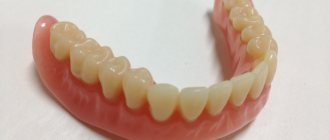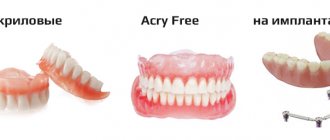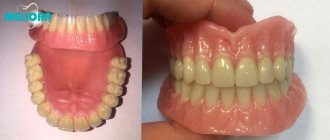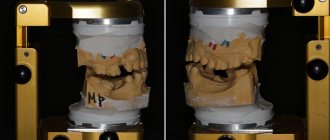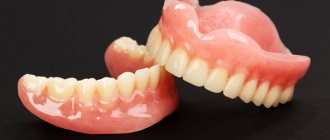Full implantation of all teeth is carried out in Moscow by top-level specialists using the latest equipment using premium quality structures.
If a person does not see a doctor for a long time about dental restoration, this can subsequently lead to severe degenerative disorders in the jaw area. In addition, facial aesthetics deteriorate, problems appear in the functioning of the speech apparatus, disruptions in the functioning of the gastrointestinal tract make themselves felt, and confidence in one’s own attractiveness is lost.
Complete jaw implantation allows you to avoid such problems, the intricacies of which will be discussed in this article.
At the Implantmaster clinic you will meet competent specialists who have 20-30 years of experience behind them and are able to choose the best method of dental restoration suitable for your specific case. At the same time, we use the latest generation diagnostic equipment, premium quality implants and prostheses, modern anesthesia methods and unique surgical devices that significantly increase the accuracy and reliability of treatment. The availability of procedures for each patient deserves special attention, which is ensured through direct cooperation with the largest manufacturers of elite systems.
Get a consultation
We will answer all your questions before visiting the clinic!
+7
Online registration
Content
1 What consequences can a long-term absence of all teeth lead to?
2 What is implantation in the absence of teeth?
3 Features and advantages of implantation of all teeth
4 Nuances of dental implantation of the upper and lower jaw
5 Types of implantation in complete absence of teeth 5.1 Classic two-stage dental implantation
5.2 Implantation of the entire lower jaw using the Nobel Trefoil method
5.3 All-on-4 dental implantation
5.4 Dental implantation “All-on-6-implants”
6 Which implantation option is better to choose in case of complete absence of teeth?
7 Photos before and after full dental implantation:
8 Benefits of full implantation while eating
9 How convenient is full dentures on implants to use?
10 Are mini-implants used to secure a full denture?
11 Stages of complete dental implantation 11.1 Diagnosis
11.2 3D modeling and implantation planning
11.3 Installation of implants
11.4 Prosthetics
12 Prices for full dental implantation
13 Reviews about implantation in the absence of teeth
Classic two-stage technique
The two-stage technique is called because implants are first placed, and after a few months a complete removable or fixed prosthesis is fixed on them. This is the most famous, most scientifically and clinically studied protocol, but, nevertheless, now it can already be called outdated (but not for single restorations - where it is appropriate). Let's figure out why this happened. Classic two-stage implantation includes several features:
- it is necessary to carry out at least 2 operations: first to install implants - after which they are left at rest, without loading the prosthesis, and then to install gum formers (several months after implantation),
- traumatic installation: with peeling of the gingival flap from the alveolar ridge and sometimes sawing the bone to prepare the bed,
- implants are installed strictly vertically: therefore, they may not have enough space - this leads to the next point,
- very often you need to build up the bone in advance: this is 1 more operation (ideally, but maybe 2-3), after which you need to recover for a long time,
- strict dietary restrictions: since until the implants are completely implanted they cannot be loaded, so the person wears a removable denture supported by the gums,
- you need to visit the dentist many times: about 25-30 times during the entire course of treatment.
What consequences can a long-term absence of all teeth lead to?
As you know, missing teeth for a long period of time can cause the following undesirable effects:
- Disturbances in the functioning of the speech apparatus;
- Disruptions in the functioning of the gastrointestinal tract;
- Premature aging, deterioration of facial aesthetics;
- State of psychological discomfort, lack of self-confidence;
- Reduction in bone size;
- Degenerative changes in the jaw joint, which can cause severe headaches.
That is why, in order to avoid irreversible consequences, experts recommend starting tooth restoration as quickly as possible, or better yet, immediately after extraction.
What is implantation in the absence of teeth?
Full dental implantation has been popular in our country for 20 years. Thanks to this procedure, it is possible to recreate natural analogues using the most physiological method. Most often, it is used by elderly patients who have refused to use a removable orthopedic structure due to insufficient chewing capabilities.
Full implantation of all teeth is also in demand among young people who suffer from serious ailments in the jaw system.
The key task of modern implantology is to reduce the cost of procedures and minimize restrictions on their implementation. The clinical data obtained indicate the complete safety of the above method and its affordable cost.
CHOOSE THE PROSTHETIC WITH IMPLANTS THAT WILL FIT YOU PERFECTLY!
Dental clinic "Bionic Dentis" is an expert clinic in installing dentures on implants of various modifications. We have been working with this technique since 2006 and have one of the largest experiences in this area in the Russian Federation and the CIS countries.
Over the past 7 years, we have been included in the TOP 10 best dental clinics in Moscow and the Moscow region according to the independent portal 32top.ru
We are the official authorized partner of the Swiss company Nobel Biocare, which ensures that you install only original implants at the best price and with the maximum warranty period.
The clinic’s doctors are highly qualified and experienced, have undergone training in Europe and Israel, and are certified specialists in all modern methods of implant prosthetics.
IN THE PHOTO: CHIEF DOCTOR OF THE BIONIC DENTIS CLINIC OZEROV PETER VLADIMIROVICH
Our doctor is an implantologist-orthopedist Petr Vladimirovich Ozerov, an official expert of the French company BIOTECH in the Russian Federation. Dr. Ozerov has 17 years of clinical experience in installing prostheses on implants. The doctor is certified by Nobel Biocare:
is a Full Member of the Russian Association of Dental Implantology Since 2012:
The highest qualifications of this specialist guarantee you high quality implantation and prosthetics. Based on the results of patient voting in 2021, the doctor took 3rd place in the ranking of prosthetics and implantation specialists:
Petr Vladimirovich has a certificate in orthopedic dentistry and surgical dentistry, this gives him the right to carry out both implantation and prosthetics himself, without the involvement of third-party doctors. This gives a better result than if such work is done by 2 different doctors: the orthopedist installs the prosthesis, and the implantologist performs the implantation operation. In the case when one specialist carries out all the work on prosthetics and implantation independently, the result is much better, since the doctor has broader clinical thinking and is familiar with all the intricacies of both the surgical protocol and the prosthetics protocol.
IN THE PHOTO: TOTAL PROSTHETICS USING PROSTHETICS ON IMPLANTS. IMPLANTOLOGIST-ORTHOPEDIST OZEROV PETER VLADIMIROVICH
Our team of doctors
Maxillofacial surgeon, Implantologist
Bocharov Maxim Viktorovich
Experience: 11 years
Orthopedist, Neuromuscular dentist
Stepanov Andrey Vasilievich
Experience: 22 years
Endodontist, Therapist
Skalet Yana Alexandrovna
Experience: 22 years
Orthopedic dentist
Tsoi Sergey Konstantinovich
Experience: 19 years
Endodontist, Therapist, Orthopedist
Varvyanskaya Anastasia Andreevna
Experience: 6 years
Dentist-orthodontist
Enikeeva Anna Stanislavovna
Experience: 3 years
Features and advantages of implantation of all teeth
The main advantage of fixing an orthopedic structure to implants is increased strength. Such a prosthesis is not subject to sudden loss, as is the case with a removable bridge, which is held in the oral cavity by bone protrusions and a method of suction to the palate.
If we talk about fixing gels, we should remember that they can cause allergic reactions and are effective only if there is a minimal error between the orthopedic structure and the prosthetic bed. If the patient has not resorted to procedures to improve and correct the prosthesis for three years, it will be necessary to use a large amount of the product for a more durable fixation. However, this is fraught with serious disruptions in the functioning of the stomach and intestines, since the gel-like substance can be “eaten up” in the coming hours after application.
Although there are many ways to improve the reliability and stability of a removable device, no professional can guarantee a high quality of life while wearing it. Moreover, when using a removable bridge, subsequent loss of bone tissue is possible, which complicates the process of fixing implants in the future.
Photos of patients before and after treatment
How the appearance of patients changes after implantation with immediate prosthetics can be assessed from the photo. It’s hard to disagree that even adaptive dentures are no different from real teeth, and artificial gums look natural.
“I took a long time to decide, visited several clinics, but almost everywhere they quoted me exorbitant sums, and the waiting period for installing new teeth was greatly delayed from the implantation itself. But then I asked around among my friends and found a modern center where I was offered to do EVERYTHING in just a week. Indeed, 3 days after implantation, a prosthesis was installed that could be chewed. This is such a joy, you can’t imagine! For so many years I limited myself in food..."
Svetlana Gennadievna, review from the website stomatology.rf
The nuances of dental implantation in the upper and lower jaw
As you know, each section of the jaw has its own structural features. For example, bone tissue in the mandibular region often has types D1 and D2. Moreover, after the loss of teeth, it is less susceptible to shrinkage, does not lose its primary strength and has a uniform structure.
In this case, it is advisable to use a smaller number of dental units, which will not in any way affect osseointegration. As a rule, the engraftment period in most such situations is 8-12 weeks.
Read more about implantation of all teeth in the lower jaw »
As for the maxillary region, the bone tissue here has a more porous, soft structure, characteristic of type D3. Moreover, in the immediate vicinity of the jawbone there are maxillary cavities with a thinned membrane.
As a result of tooth loss, cellular nutrition deteriorates and the size of the spongy area decreases. This section is characterized by bone with the softest structure (D4). Due to the vacuum, the height of the bone tissue is reduced and the distance to the nasal sinus is reduced.
This is fraught, first of all, with damage to the shell of the maxillary cavity, since it can easily be touched by the extreme part of the implant during surgery.
Moreover, due to the increased looseness of bone tissue in the maxillary region, the process of osseointegration of two-stage models often takes up to 16 weeks when using premium implants, and up to six months when using budget systems.
Read more about implantation of all teeth in the upper jaw »
That is, due to the difference in the structure of bone tissue in the lower and upper jaw, it is necessary to adhere to special rules both when choosing implant models and when determining the method of their fixation.
By contacting the Implantmaster clinic, you can expect an individual attitude, as well as the selection of dental structures and implantation methods that will provide a long-term guarantee. At the same time, we practice planning and diagnostics in three-dimensional format and on modern equipment, which contributes to the most accurate fixation of dental implants, taking into account the individual parameters of the jaw structure.
Types of implantation in complete absence of teeth
Due to the differences in the anatomical features of the jaws, after research, the appropriate parameters of the implants are selected (shape, diameter, length and model), as well as their number and method of fixation.
Classic two-stage dental implantation
It is carried out in two successive steps. An implant is fixed in the area of each missing tooth (the total number of dental structures per jaw reaches 14 pieces). In the process of installing implants, a patchwork method is used, which involves tilting part of the gum into the spongy section at an angle of 90 degrees.
A prerequisite for implementing the method is the presence of sufficient bone tissue (at least 5 mm). In case of its deficiency, osteoplasty is considered a necessary procedure, which is accompanied by a delay in fixation of dental implants for a period of up to 6 months.
It is important to note that with the traditional method, there is no immediate loading with orthopedic structures; at least 12-24 weeks must pass until osseointegration is completely completed. Next, a crown made of zirconium or metal-ceramic material is fixed to each implant.
The possibility of achieving an even, clearly defined and natural gingival contour using the classical technique deserves special attention.
Read more about classic two-stage dental implantation »
Implantation of the entire lower jaw using the Nobel Trefoil method
One of the innovative techniques in the field of implantology is Trefoil. It is widely used in the mandibular region in situations where there is no possibility of inclined fixation of dental structures. The advantages of this concept include:
- The possibility of using only three implants, which formed the basis for the name of the procedure - All-on-3;
- Fixation of a permanent type orthopedic structure immediately after surgery;
- Shortened procedure time – implantation of all teeth in the mandibular region is carried out in one day;
- Possibility of cost savings.
Among the limitations for using the above method are:
- Lack of possibility of use in the maxillary region;
- The presence of sufficient bone tissue in the frontal zone, which is a necessary condition for implantation;
- During the procedure, exclusively Nobel Biocare systems are used.
Read more about Nobel Trefoil »
All-on-4 dental implantation
All-on-4 dental implantation is considered a one-stage procedure, which is based on the fixation of only four dental units into the bone tissue. Moreover, two of them are installed in a straight position in the frontal zone, and two are installed in the chewing area at a certain angle. During installation, the structure is punctured in the gum tissue in order to penetrate into the deeper layers of the jaw. In this case, the Dentium, Nobel and Straumann models are used.
The possibility of surgical intervention is allowed even if the size of the bone tissue is insufficient. The need for osteoplasty is present only when there is significant bone loss.
Fixation of an adaptation-type prosthesis is performed after 48-72 hours of surgical intervention. This design includes 10 units and only partially covers the dentition. A permanent bridge is installed only one year after osseointegration is completed.
Since this procedure involves a smaller number of elements and there is no need for sinus lifting manipulations, complete dental implantation using this method has a lower cost in contrast to the basal and traditional methods.
Read more about All-on-4 implantation »
Dental implantation “All-on-6-implants”
A modernized concept of the “All-on-4” method, during which two additional implants are fixed – in the area of the chewing teeth. This contributes to increased stability and strength of the entire orthopedic structure. Fixation of an adaptation-type prosthesis, which includes 14 dental units, is carried out immediately after surgery.
In turn, 12 months after the end of osseointegration, a permanent type orthopedic structure is installed using zirconium or metal-ceramic crowns.
At Implantmaster dentistry, “All-on-6” dental implantation is carried out with impressive discounts, since we directly cooperate with the manufacturers of premium Strauman systems.
Read more about All-on-6 implantation »
WE MANUFACT ANY IMPLANT PROSTHESES PRESENTED ACCORDING TO THE STANDARDS OF THE RF MINISTRY OF HEALTH
In Moscow and the Moscow region, many dentists offer their services for the manufacture of dentures on implants of one modification or another. How can a patient choose a performer for such complex prosthetics? It is necessary to focus on prostheses manufactured according to the STANDARD OF THE RF MINISTRY OF HEALTH. This industry standard regulates all aspects of the production of orthopedic structures:
- the requirements for the sanitary and epidemiological regime in a medical institution for such types of work have been determined
- a list of equipment and space for performing these services has been determined
- requirements for personnel qualifications have been determined.
- methods of prosthetics and implantation have been determined that should be strictly followed
- safety requirements for materials used for prosthetics and implantation have been determined.
IN THE PHOTO: TOTAL PROSTHETICS USING PROSTHETICS ON IMPLANTS. IMPLANTOLOGIST-ORTHOPEDIST OZEROV PETER VLADIMIROVICH
The dental clinic "Bionic Dentis" strictly follows the STANDARD OF THE MINISTRY OF HEALTH OF THE RF when carrying out work on prosthetics on implants.
- The clinic uses a strict sterilization and disinfection protocol, which eliminates infection of our patients and the occurrence of purulent-inflammatory complications after medical intervention.
- Surgeries at the clinic are performed in an operating room rather than in a regular dentist's office.
- all prosthetic and implantation methods are registered with the Ministry of Health of the Russian Federation
- all materials used for prosthetics have a registration certificate from Roszdravnadzor of the Russian Federation
- Thanks to close cooperation with the implant manufacturer Nobel Biocare, we install only original implants, the authenticity of which is confirmed by an international certificate.
- The work is carried out only by qualified and certified dentists, whose certificates you can view in the clinic or on our website in the ABOUT DOCTORS section
- All work is provided with a long warranty period.
- The warranty on Nobel Bioker implants is international for life.
IN THE PHOTO: TOTAL PROSTHETICS USING PROSTHETICS ON IMPLANTS. IMPLANTOLOGIST-ORTHOPEDIST OZEROV PETER VLADIMIROVICH
Our clinic is your reliable and qualified partner in the field of prosthetics on implants and installation of prostheses on implants of any modification.
Over the years, we have accumulated one of the largest clinical experiences in the Russian Federation and have honed our methods to perfection.
Following the STANDARD OF THE MINISTRY OF HEALTH OF THE RF in services and work on prosthetics and implantation allows us to produce structures of the highest quality that last for decades.
We invite you to get acquainted with our clinic and doctors, see with your own eyes and be convinced that our dentistry is rightfully recognized as one of the best clinics in Moscow and the Moscow region.
Which implantation option is better to choose in case of complete absence of teeth?
Implantation options for complete absence of teeth in the jaw are varied. These include:
- Instant procedure;
- Traditional step-by-step method;
- Basal method.
The most effective results can be obtained in an instant procedure. Such implantation can be used in case of complete absence of teeth both in the maxillary region and in the lower jaw.
Thanks to the use of innovative computer technologies in the field of diagnostics, it has become possible to refuse without additional increase in the size of bone tissue.
Full jaw implantation using the “All-on-four” or “All-on-six” method allows you to reduce the cost of restoring teeth. This is due to the use of fewer implants and a reduced number of surgical interventions.
Basal implantation is not a winning option if all the teeth in the jaw are missing, since its cost is considered too high compared to other methods. Traditional implantation is also an expensive procedure, since it also requires significant expenses from the patient.
Benefits of full implantation while eating
If we consider the functional effectiveness when restoring teeth with removable orthopedic structures and using implants, then the latter option is more preferable. This is due, first of all, to the effect on the functioning of the gastrointestinal tract.
Those who use removable dentures often have to resort to the help of a gastroenterologist, since they do not have the ability to fully chew food.
Moreover, the very process of eating causes them severe discomfort, since the structure puts pressure on the mucous membrane, under which a large number of nerve endings are located. And if, for example, an implantation of the upper jaw is performed in the absence of teeth, there is no pain, since there is no load on the soft tissues.
ALL-ON-4, ALL-ON-6 technology
A patient who has completely or largely lost his teeth experiences enormous moral pressure, which over time can even transform into a type of complex such as dentophobia - the fear of everything related to teeth. The process of eating, talking in public, not to mention the ability to smile, turns into emotional torture for such people, which is difficult for others to understand. Against the background of dental problems, a person becomes sociopathic, withdrawn and emotionally unstable. Only high-quality prosthetics, which will be comfortable, unnoticeable and will give the patient confidence that no one will know about his problem, solves this serious problem.
Are mini-implants used to secure a full denture?
Implantation of all teeth using mini-structures was widely popular several years ago. This is due to the use of ultra-thin implants, the installation of which was carried out in the shortest possible time without massive surgical interventions.
But, despite the popularity of this procedure, the real result was obvious: ultra-thin structures cannot serve as full-fledged supporting elements for dentures and do not have the ability to withstand increased chewing pressure. Therefore, they can become a solution in one single case - as a temporary support for temporary orthopedic structures.
Bone grafting and sinus lift
Bone grafting (or osteoplasty) is a surgical operation to restore the width and height of the bone in places where implants will be installed. Osteoplasty can be performed using either the patient's own bone (for example, from the palate) or synthetic materials. After the operation, you need to wait 4-6 months for the graft to take root, and only then install the implants. But repeated osteoplasty is often required, because the material does not always take root, or quickly atrophies without chewing load.
Sinus lifting is raising the bottom of the maxillary sinus to a height that is “not enough” for installing an implant. The operation is quite traumatic, with a long rehabilitation period and a frequent complication - perforation of the sinus mucosa with an instrument. Simultaneously with the sinus lift, bone material is replanted, and an implant can even be installed immediately. But if this is not possible, and you must wait for the bone to heal, then after a few months you may also need to re-build it up.
Stages of full dental implantation
Diagnostics
At this step, thorough diagnostic procedures are carried out to eliminate restrictions for implantation. Computed tomography is performed to study the size and quality of bone tissue. Laboratory tests are also a prerequisite. In addition, if the patient is diagnosed with any diseases in the oral cavity, then the necessary procedures include their elimination. Next, the method of installing the prostheses is selected and a treatment plan is drawn up.
3D modeling and implantation planning
Initially, the specialist examines the condition of the bone tissue and selects areas with increased density. Next, the system is modeled, suitable implant models are selected, and the prosthesis design is formed.
Installation of implants
If all teeth are implanted using the classical method, osteoplasty is a prerequisite. In this case, the patchwork method is used during the procedure. In the case of one-stage techniques, a minimally invasive method is used - through a puncture in the gum tissue.
If you are planning full dental implantation in Moscow, you should use an integrated approach, which involves the use of prosthetics, implants and arches made of homogeneous material. As is known, if titanium of different grades is used, it may contain various additives, including metals. Their incompatibility in the oral cavity often leads to allergic reactions and inflammatory processes in this area. In our dentistry, all metal components are made of highly purified titanium material, which increases the efficiency of the measures taken several times.
Prosthetics
Immediately after fixation of dental implants, impressions are made necessary for the production of temporary orthopedic structures. If traditional dental implantation is performed with complete edentia, it is necessary to wait about 12-24 weeks until the healing period is completed. Only after this is a permanent structure installed, including 14 crowns. In the case of a one-stage procedure, the use of an adaptation-type prosthesis is allowed 48-72 hours after surgery. In turn, permanent crowns are fixed after 1 year.
Abutment selection.
They vary in type of manufacture and in the materials from which they are made. If you decide on the choice of a metal-ceramic crown, then a titanium abutment is quite suitable. If the crown is made without metal, from zirconium dioxide, then there are no options, only a zirconium abutment.
Regarding the question: standard or custom? Their cost varies, but not critically (individual is a little more expensive). BUT, the individual abutment is made with the utmost precision for the crown to fit to it, microgaps are eliminated, and pathogenic microbes will not enter the implant area. In the case of a standard one, there is a high probability that cement will get into the implant area already at the stage of fixing the crown, and subsequently microbes and bacteria will enter the implant area.
Prices for full dental implantation
When complete dental implantation is performed in Moscow, the most cost-effective method is “All-on-four” without the use of osteoplasty. Such turnkey implantation of all teeth has affordable prices, the lower threshold of which is equal to 300,000 rubles.
| Nobel Trefoil (All-on-3) | 300 000 ₽ |
| All-on-4 (Dentium SuperLine) | from 350,000 300,000 ₽ |
| All-on-6 (Dentium SuperLine) | from 400,000 360,000 ₽ |
| All-on-4 (Nobel Biocare) | from 450,000 400,000 ₽ |
| All-on-6 (Nobel Biocare) | from 500,000 450,000 ₽ |
| Pro Arch (Straumann) for 4 | from 400,000 360,000 ₽ |
| Pro Arch (Straumann) on 6 | from 500,000 460,000 ₽ |
| NobelZygoma system (zygomatic implants) | from 485,000 ₽ |
| Full list of prices for dental implantation of the entire jaw » |
If dental implantation for a full jaw is performed using the traditional method and using more expensive materials, the prices for services will be significantly higher.

